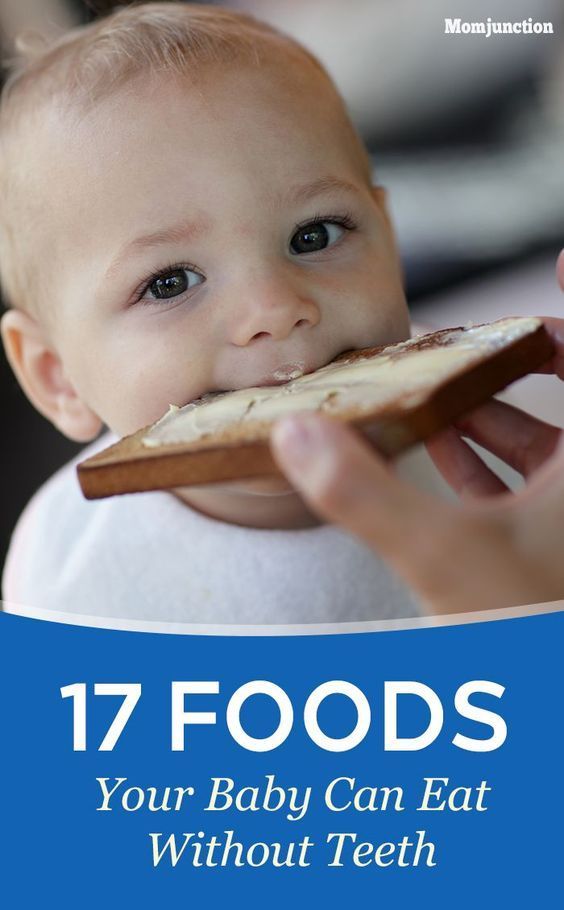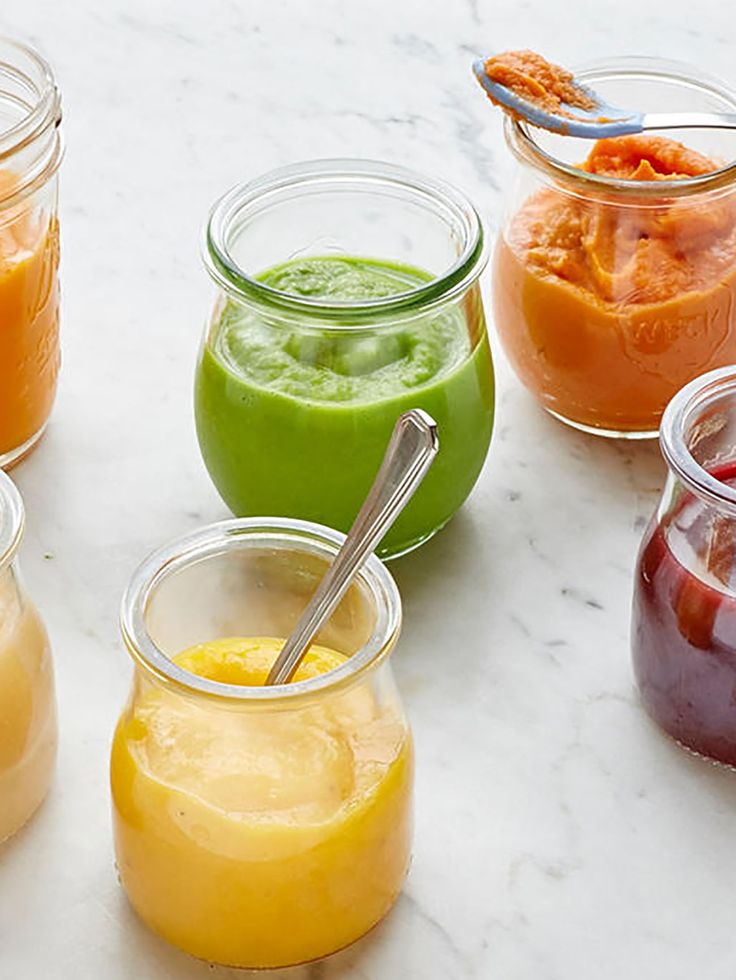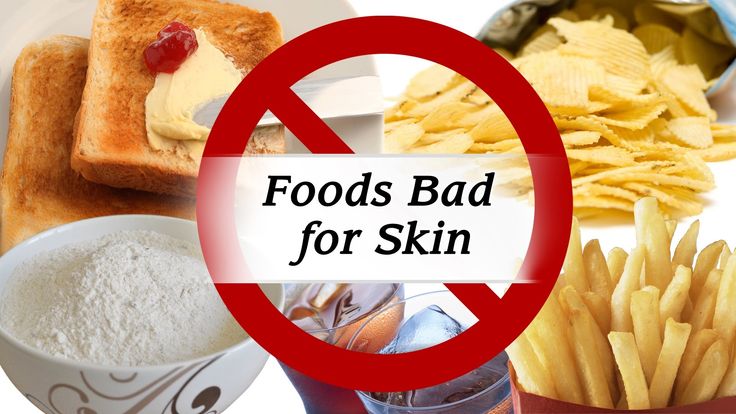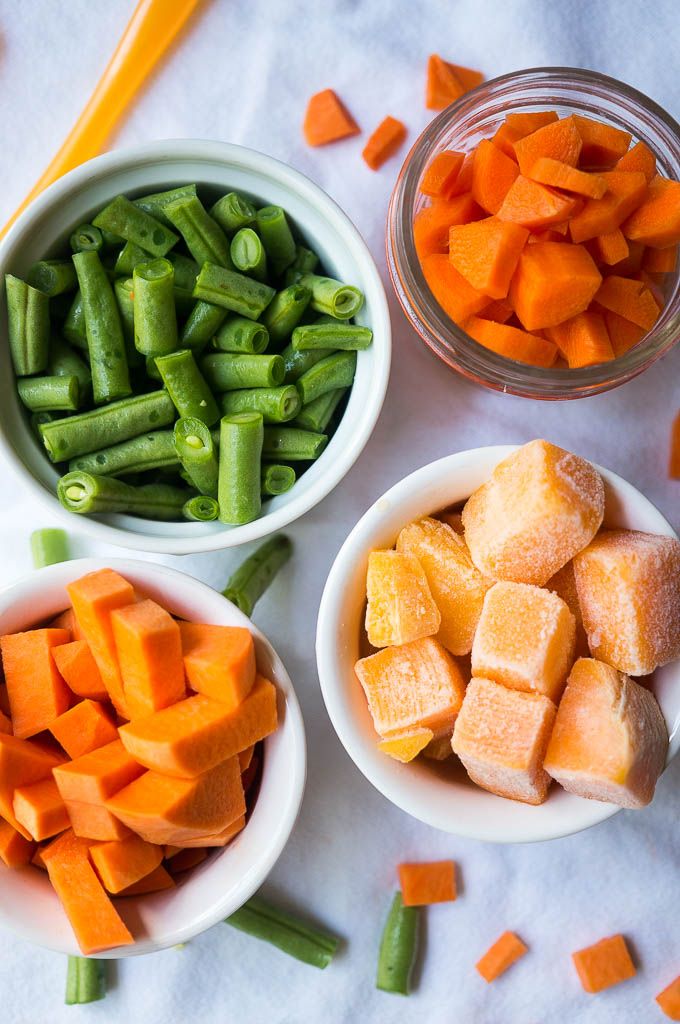Baby not eating finger foods
What to do if your baby doesn't like baby foods, purees, or solids
Introducing your baby to solid foods can be fun and photo-worthy, but this milestone can also come with some challenges.
It's normal for babies to balk the first time (or many times) they try new solid foods, since they've only ever had breast milk or formula. Don't be discouraged if your baby refuses food at first – it can take 10 or more tries sometimes to get your baby to eat a new food.
The key at any age is to offer your baby a wide variety of foods and keep trying. Even if they don't like the food at first, keep offering it to them – babies learn to love what they're given. If they don't like sweet potato, maybe they'll like squash. Once they get used to squash, try mixing squash with sweet potato to get them used to the new flavor. If they don't like bananas, try avocado and then go back to bananas for another try.
But if you're serving your baby different foods and nothing's working, read on.
If your baby won't eat solids
If your baby is about 6 months old and is developmentally ready for solid foods (has good head control, is grasping, can sit up on their own), but doesn't seem interested in food, they may just not be ready to dive in yet.
Some babies need a little more time to develop curiosity around food. Take it slow – if you try to give your baby one kind of puree and they refuse it, wait a few days and try a different puree. In the meantime, make family meals fun and engaging by talking to your baby about the food you're preparing and letting them watch you eat.
If your baby is struggling with purees, baby-led weaning could be a good alternative. This method encourages your baby to explore food on their own. Simply offer your child safe foods, like soft scrambled eggs or long spears of very ripe banana, and let them experiment with how the food feels in their hands and mouth.
Keep in mind that whether you start with pureed foods or try baby-led weaning, gagging is perfectly normal while your baby learns to feed themself. The gag reflex helps bring food to the front of the mouth so your baby learns how to chew.
The gag reflex helps bring food to the front of the mouth so your baby learns how to chew.
If your baby won't eat finger foods
If your baby is 9 months or older and they don't like finger foods and thicker purees, there could be a few reasons. If your baby has primarily been spoon-fed by you up until now, they may need some time to get the hang of feeding themselves finger foods.
Or they may not be ready yet – babies can't pick up and feed themselves finger foods well until they learn the pincer grasp. This usually happens around 8 to 10 months, but if you're baby's a little behind, don't worry. They may just need some extra time to learn, and some encouragement from you can help.
You can help your baby master their grabbing skills by giving them lots of toys that are easy to grasp, like soft blocks, plastic rings, and board books. Play a little game with them by putting a colorful toy in front of them and encouraging them to grab it.
Some babies also have a sensitive gag reflex that makes them gag on lumpy food. (They may have had difficulty latching on when nursing as infants.) If your baby has trouble eating textured or lumpy food without gagging, sticking to thin purees may feel safe, but this could get in the way of helping your child learn how to chew.
(They may have had difficulty latching on when nursing as infants.) If your baby has trouble eating textured or lumpy food without gagging, sticking to thin purees may feel safe, but this could get in the way of helping your child learn how to chew.
Teach your baby to tolerate lumpy food by adding ingredients with a uniform texture – like wheat germ or cracker crumbs – to pureed food. Start with a small amount and add more as your baby gets used to the texture. You can also try giving them solids that will dissolve easily in their mouth, like baby crackers, to help them get used to new textures.
If your baby doesn't like the texture of meat, try a different preparation: For example, if your baby won't eat diced chicken breast, try giving them ground chicken or thinly sliced deli meat instead.
If your baby is sensitive to the texture of finger foods, experiment with introducing different textures in other ways – give your baby feathers, a bumpy ball, or cooked noodles to play with. (Just make sure to supervise in case small items end up in your baby's mouth.) Teething toys that have bumps may help, too. Getting used to new sensations at playtime might make your baby more open to unfamiliar food textures.
(Just make sure to supervise in case small items end up in your baby's mouth.) Teething toys that have bumps may help, too. Getting used to new sensations at playtime might make your baby more open to unfamiliar food textures.
If your child still rejects lumpy or textured solid food at a year old, or if they aren't able to feed themself finger foods by 12 to 15 months, check in with your child's doctor. It could indicate that your child has a developmental problem or sensory issue that may be improved with the right help.
Severe difficulty eating a wide range of foods is common among kids with autism spectrum disorder (ASD) or sensory processing disorder (SPD), but picky eating isn't the only sign of these conditions. Talk to the doctor if you have any concerns.
What to do when baby won’t touch food
If you have just started solids and are not sure how to go about it, check out our course videos on starting solids, baby-led weaning and responsive spoonfeeding and consider downloading our Starting Solids bundle.
There are many reasons why a child may not be interested in eating, but what do you do when babies or toddlers aren’t interested in even touching their food?
Chase the whyIf a baby is not eating, they are trying to communicate something. For some babies, they simply might not have the interest, skill, or desire to eat at that moment; for others, it may be more complicated given their history (reflux, a bad gag, negative associations with the highchair, etc.) It’s imperative to listen to baby’s cues in any of these situations while guiding them to learn.
The most important thing you can do is bring calm confidence to the table and believe that baby can learn the skills for eating. In other words, stay calm and don’t give up!
If baby is 6 months old or youngerYou’ve done all the reading about starting solids. You have the highchair, bib, and you know what food you want to introduce first. And then, in the blink of a camera, at the height of your anticipation, your bubble bursts.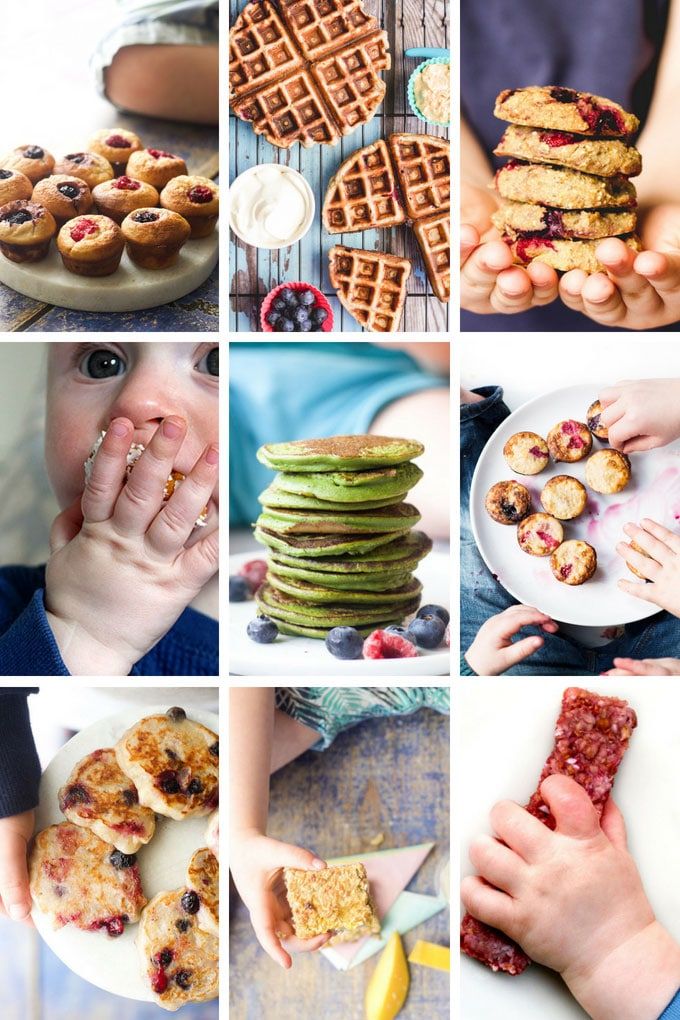 Baby doesn’t bring a single thing to their mouth.
Baby doesn’t bring a single thing to their mouth.
Or maybe you started with spoon feeding and decided to make the switch to finger food. You cut the food just right, set the meal just so, but instead of enjoying it, baby doesn’t touch a thing.
At 6 months of age or younger, babies are often just not ready. Evaluate whether baby is truly ready for solids (see our page on readiness or check out our video) and make sure baby is truly meeting all of the developmental signs before starting solid food.
Consider waiting a week or two. If baby is less than or around 6 months old and showing signs of readiness, but doesn’t engage with food offered, try not to worry too much. Many babies at this age are just not cognitively ready to self-feed, even if they are showing the motor milestones for readiness. This is normal.
Even with spoon-feeding, many babies will turn away from the spoon when they are not ready. This is communication saying they are not interested or ready yet. Listen to what baby is telling you. Sometimes the youngest eaters just need another week or two to wrap their heads around eating.
Listen to what baby is telling you. Sometimes the youngest eaters just need another week or two to wrap their heads around eating.
Avoid feeding schedule changes. Encouraging or pushing baby to eat before they are ready can lead down a bumpy road of food refusal. At this age, avoid feeding schedule changes to make baby hungry enough to try solid foods. Remember: Baby’s primary nutrition should be from breast milk or formula until 12 months of age. Plus, an overly hungry young baby is not primed to learn. Babies who are too hungry and don’t yet have the skills to self-feed will end up melting down at the table. (Cue screaming for the breast or bottle.)
Let baby watch you eat, often. Even before you start solids, bring baby to the table. Pull up the bouncing chair so baby can watch you eat or sit baby on your lap. Channel a dinner party vibe—laugh, smile, and enjoy your meal so baby can see the fun of eating. When baby is ready to start solids, pull baby’s highchair up to the table or put baby on your lap while YOU eat. Babies learn from watching us, and many young babies need more modeling to realize that food goes in our mouths.
Babies learn from watching us, and many young babies need more modeling to realize that food goes in our mouths.
Get baby’s attention. Tap their highchair tray or table with your fork or finger, call their name, and make eye contact. Once they are paying attention, bring the food to your mouth and smile. This is very important with spoon-fed babies. Spoon-fed babies learn that food comes on a spoon, it’s put in their mouth, and swallowed. Picking up food with their hands and bringing it to their mouth is an entirely different story—the concept that hands bring food to the mouth is brand new. See the tips below for helping baby pick up and bring food to their mouth or dive in to our video on transitioning from spoon feeding to self-feeding.
Talk to baby and describe the food: “This is delicious spaghetti with Grandma Mary’s famous sauce! It’s tangy and sweet at the same time!”
Model with your mouth open. Throw your manners out the window and chew with your mouth open so babe can see what you are doing. When you swallow, point to your stomach and say: “The spaghetti went all the way to my belly!” You may feel a bit silly, but modeling is a game-changer for many young babies.
When you swallow, point to your stomach and say: “The spaghetti went all the way to my belly!” You may feel a bit silly, but modeling is a game-changer for many young babies.
Go BIG with food sizes. It may seem counter-intuitive, but for young babies, bigger is better. Watch how a 6- to 9-month-old baby interacts with toys, and you’ll notice they use all of their fingers and the palm of their hand to grasp things. Bigger pieces of food are much easier to grasp, hold, and control. Learning to chew is challenging work, and we want to help make everything else (i.e., reaching and grasping) as easy as possible. A baby struggling with a smaller piece of food may give up because they don’t have the skill to grab it yet.
Bigger pieces of food are also easier for baby to manage in their mouth. The brain more readily notices and registers big pieces. Young babies are more likely to explore and move big pieces around in the mouth successfully.
You want to provide just the right amount of challenge. Bigger pieces of food provide baby with a fun challenge but aren’t too difficult to reach, grasp, and move around with their tongue. When tasks are too hard, babies may give up and (in their own way) say, “No, thanks!” Fine motor control improves as baby gets closer to 9+ months, and they’ll start using their thumb and index finger to pinch smaller items. This is a great time to size down in food so they can utilize their new skill.
Bigger pieces of food provide baby with a fun challenge but aren’t too difficult to reach, grasp, and move around with their tongue. When tasks are too hard, babies may give up and (in their own way) say, “No, thanks!” Fine motor control improves as baby gets closer to 9+ months, and they’ll start using their thumb and index finger to pinch smaller items. This is a great time to size down in food so they can utilize their new skill.
If baby is just starting to self-feed after a period of spoon-feeding, they might not know what to do with food in front of them. Remember, they’ve been practicing a specific eating skill (accepting a spoon) and need to learn a different way to eat.
Make sure baby comes to the table happy. If babe has a meltdown the minute you put them in the highchair, start there. Take a break from the highchair and serve a meal with baby sitting on your lap or have a picnic on the living room floor. Some babies love a little excitement on the way to the table—try dancing, twirling, or crawling! Set baby up for success and start the meal happy.
Some babies love a little excitement on the way to the table—try dancing, twirling, or crawling! Set baby up for success and start the meal happy.
Model your daily eating routine. This is especially important if you are transitioning from spoon-feeding to baby-led weaning. Remember: Everything baby is doing is a new skill, and they need to see how it’s done to understand better.
Imitate baby’s facial expressions and encourage them to imitate you. Watching to learn is a huge part of infancy. Think about it this way—the more you enjoy something, the more interest your baby has in it. The more you look at your phone, the more baby wants to play with it, right? Enjoy eating your meal, and baby will want to participate in eating, too!
Bring baby’s attention to the food. Tap baby’s tray near the food to make sure they are visually attending to it, call their name, and say, “Look!” Sometimes a simple, single cue is all a baby needs to acknowledge and touch food on a tray. Note: While not common, a lack of sustained attention can be a sign of autism. If baby is not attending to the food after repeated attempts to get their attention to it, consult your health care professional.
Note: While not common, a lack of sustained attention can be a sign of autism. If baby is not attending to the food after repeated attempts to get their attention to it, consult your health care professional.
Offer food vertically in the air. Make it easy for baby to pick the food up by offering it to them in the air. You can also try standing food upright to make it easier for baby to grasp. (Such as banana sticks in yogurt with the banana standing upright.) If baby is still not interested, try taking a bite of the food yourself and then offering that piece to baby in the air. If you offer something like yogurt, oatmeal, or other puree-type foods, you can load the spoon and hand it to your child or hold the spoon in your mouth and lean toward baby to grab.
Offer the food from your own mouth. Put your manners aside and try this tried-and-true feeding therapy trick: hold the food between your teeth, lean toward baby, and let them take the food out of your mouth with their hands.
Remember: Step one is for baby to interact with the food; if they are reaching for and/or grasping the food items, you’re making progress! Patience is key. We don’t expect babies to roll from tummy to back consistently the first time they try. Likewise, we don’t expect babies to eat consistently in the beginning, either. Their primary nutrition source remains breast milk or formula until 12 months of age. Any table food they consume is a plus.
Bring baby to the table a bit hungry. Consider offering breast or bottle 1.5-2 hours before mealtime, so they have a bit more hunger drive to eat the food on their tray.
However, if a 9- to 12-month-old baby tries to eat but appears frustrated and irritable at the table, it could be a sign that they are too hungry and want food but have yet to hone their fine motor or chewing skills—cue the hanger. This could be a sign that baby needs an appetizer, so they come to the table with a desire to eat, ready to learn and build skill, but aren’t hangry. Consider a small breast or bottle-feed 30-45 minutes before mealtime or offer easy-to-eat food to start the meal.
Consider a small breast or bottle-feed 30-45 minutes before mealtime or offer easy-to-eat food to start the meal.
Here are some additional tips to encourage food exploration and new skills for toddlers resistant to touching foods or who have been spoon-fed and are now transitioning to self-feeding table foods.
Practice makes perfect. Toddlers learn by doing. They may need additional practice scooping with their hands and using containers. You can encourage and practice these skills by scooping water with cups in the bathtub or scooping dry items like rice or beans with spoons or their hands.
Let them practice feeding you. If the child is okay touching food but won’t feed themselves, ask them to feed you. Bring their attention to a piece of food, hand it to them, and ask them to put it in your mouth. If you have pets (and feel comfortable with little hands near the pup’s mouth), ask the toddler to feed the dog.
Pretend play! Feed stuffed animals or dolls and explain what’s happening: “You fed bunny a piece of cheese! It’s going to go all the way to her belly and help her grow big and strong!”
Model and narrate more. Toddlers still learn a lot from watching and modeling. Demonstrate feeding yourself and explicitly verbalize what’s happening: “Mama is putting this banana in her mouth! And then she’s going to chew it with her teeth! Watch!” Then point from your mouth to your belly and explain: “The banana is going all the way to my belly to help me feel strong!”
Engage in sensory play outside of mealtime. If the child does not want to touch certain textures (i.e., wet, cold, sticky), try sensory play outside of mealtime. Go for finger paints, shaving cream, or slime. If texture avoidance happens with more than just food, consider talking to a pediatrician. An occupational therapist trained in sensory integration may be able to help.
Explore different shapes, sizes, and props. Some toddlers respond well to making food more fun. Try serving food with a toothpick or cut food in a fun shape. Mango in bite size pieces on a plate may seem totally boring… but mango on toothpicks? Fun!
Stop spoon-feeding. If a toddler knows they will always be spoon-fed to meet their hunger need, they are less likely to try feeding themselves, which is more challenging for them to do. Tips for this transition:
- Start meals slightly earlier than usual so they are hungry but not starving or hangry.
- Use the modeling tips above and model for them to feed themselves.
- If you are confident they can chew foods, consider not spoon-feeding them and see if they self-feed. If they choose not to eat, allow them to learn that hunger is a natural consequence if they don’t feed themselves. This is age appropriate and should work rapidly. If you have any concerns, discuss a plan of action with a feeding therapist or health care provider.

- Offer a snack that they can self-feed a little bit later to help them solidify the skill.
For more support on transitioning babies and toddlers from spoon-feeding to self-feeding, see our video here.
If the child has not had the chance to learn how to chew foods and they appear to struggle with consistencies other than purees, consider talking to your pediatrician about a referral for feeding therapy with an occupational or speech therapist to help build chewing skills.
When baby will touch everything but wet foods like yogurtWill baby or toddler interact with everything except wet textures like yogurt, oatmeal, or sauces? Some kids are more sensitive to this type of texture and may need help learning to tolerate it.
Practice self-feeding with a spoon. This is a skill babies and toddlers need for life, so practicing with pre-loaded spoons or scooping with utensils are great options. Offer the spoon but don’t put it in baby’s mouth: stop a few inches away from their face and let baby reach for the spoon to pull it toward their mouth.
Provide opportunities for sensory play. There are many ideas online for “sensory bins” for babies and toddlers, but consider playing in wet grass, painting with ketchup, making edible slime or finger paints, or playing with sponges in the bath or at a water table.
Let baby feed you. Will they touch the food to bring it to your mouth? This can be an excellent gateway to touching the food for themselves.
Avoid over-cleaning their hands. Sometimes when babies and toddlers know that messy play ends with a wipe down, they altogether avoid the activity anticipating the ending. It’s tough watching kids get super messy, but there’s a massive benefit in letting them get sticky. Make clean-up fun and lighthearted. Go to the sink, turn the water on, and have a splashing party.
When to seek helpGenerally, a lack of interest in touching food is not typically a concern; it’s often just a sign the child needs more exposure and practice.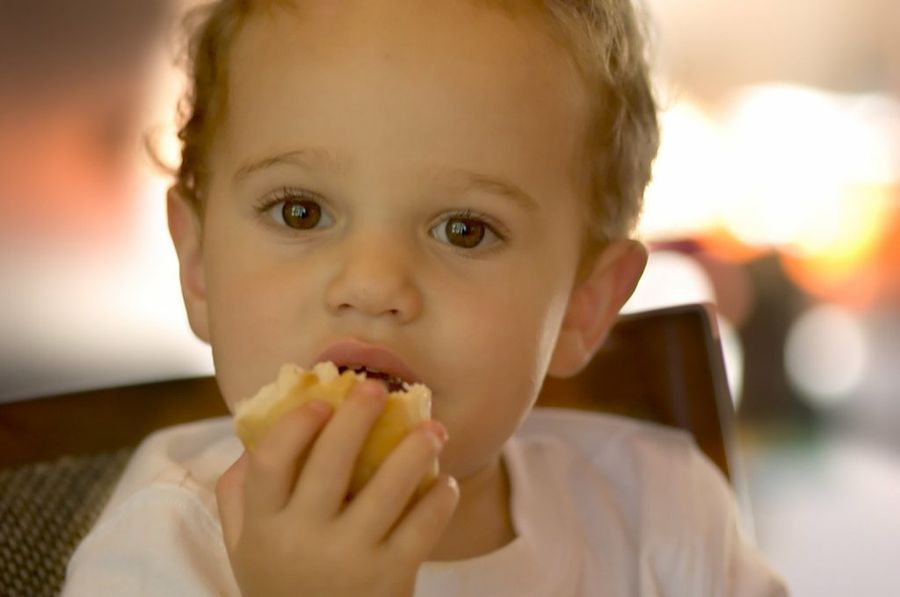 However, consult your pediatric health care professional if the child is:
However, consult your pediatric health care professional if the child is:
- Gagging, retching, or vomiting at the sight or touch of food.
- Extremely sensitive to certain textures (like wet, sticky, etc.). They may need extra help with sensory processing. Talk to your health care professional for a referral for occupational therapy to help them better regulate their body.
- Not gaining weight well despite drinking breast milk or formula.
- Not consuming any solid foods after 8 months of age. Note: Spoon-fed babies and toddlers in transition to finger food and self-feeding may have a period of food refusal. See our video for tips on how to bridge this transition.
- Not accepting any chewable foods after a couple of weeks of exposure to solid foods (9 months or older). If baby is younger than 9 months and not accepting chewable foods, employ the tips above for baby’s age and give it a bit more time.
- Swallows all chewable food whole without attempting to chew and is 12 months old or older.
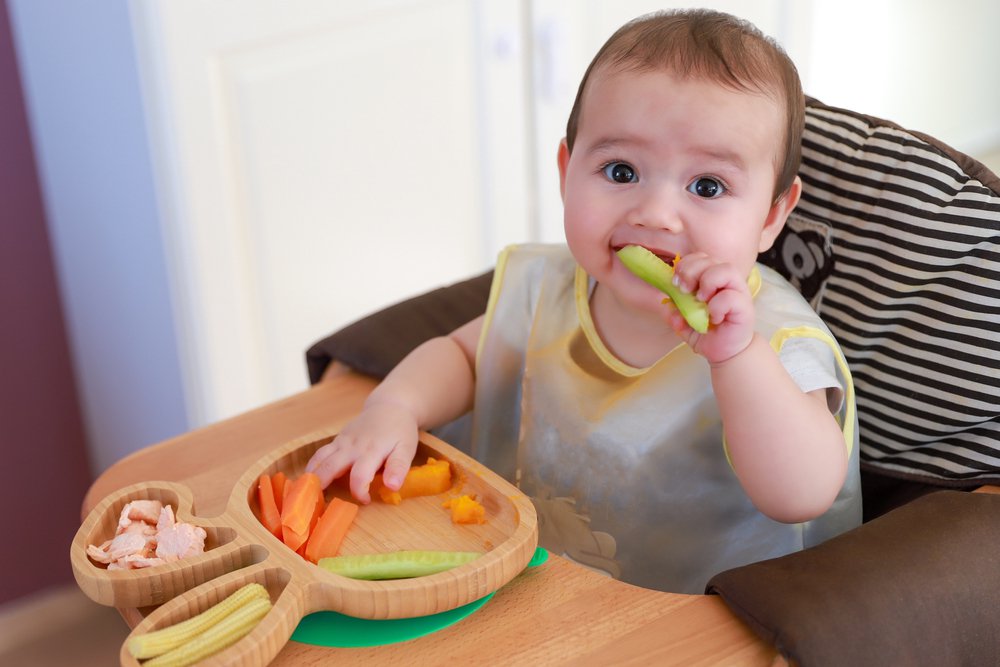
- Not attending to the food on the tray after attempts to get their attention (calling their name, tapping the tray, etc.). While not common, a lack of sustained attention can be a sign of autism.
No matter the age of baby, remember the division of responsibility. There are certain things you can control and certain things you cannot:
You control what foods the child is offered, when food is offered, and how you show up to the meal (i.e., your attitude).
Your child is in control of whether they eat and how much.
No matter how hard you try, you cannot control if or how much your child will eat.
Trying to control their intake is a slow spiral down a rabbit hole of picky eating and food refusal. Try one or two strategies at the meal, and if your child is still not interested, enjoy your own meal, and move on. Tomorrow is another day.
How you show up to the meal is much more important than you probably realize. The literature on picky eating shows that parental concern about intake and pushing babies to eat when they are not interested consistently leads to picky or selective eating later.1 2 3 4
So, take a deep breath and try to have fun as kiddo instinctively fumbles through learning to eat.
If you are concerned about your child’s weight gain or ability to eat table foods, talk to your child’s pediatrician. A feeding therapist can provide new ideas and additional support.
Reviewed by:
Kary Rappaport, OTR/L, MS, SCFES, IBCLC
Kimberly Grenawitzke, OTD, OTR/L, SCFES, IBCLC, CNT
- Emmett, P. M., Hays, N. P., & Taylor, C. M. (2018). Antecedents of picky eating behaviour in young children. Appetite, 130, 163–173.https://doi.org/10.1016/j.appet.2018.07.032
- Cardona Cano, S., Hoek, H. W., & Bryant-Waugh, R.
 (2015). Picky eating. Current Opinion in Psychiatry, 28(6), 448–454.
(2015). Picky eating. Current Opinion in Psychiatry, 28(6), 448–454. - Steinsbekk, S., Bonneville-Roussy, A., Fildes, A., Llewellyn, C. H., & Wichstrøm, L. (2017). Child and parent predictors of picky eating from preschool to school age. International Journal of Behavioral Nutrition and Physical Activity, 14(1).
- Cole, N. C., An, R., Lee, S.-Y., & Donovan, S. M. (2017). Correlates of picky eating and food neophobia in young children: a systematic review and meta-analysis. Nutrition Reviews, 75(7), 516–532
Finger food - Encyclopedia Baby food
Victoria Levchuk©Victoria Levchuk©
Finger food is baby food prepared in the form of pieces of boiled soft food, so that the child can take it into the mouth and transfer it to the mouth on its own chew or swallow without assistance or difficulty.
Finger food is a fun way to encourage the development of motor coordination and skills for biting, chewing and self-feeding. Food in pieces should be easy to grasp by children's fingers and long-term storage, and should not contain bones or seeds.
Food in pieces should be easy to grasp by children's fingers and long-term storage, and should not contain bones or seeds.
As soon as the child begins to take food with his fingers and put it into his mouth with reasonable hand-eye coordination, then the fun begins! Let your child experiment with soft snacks such as a banana or peach that can be “hand-mashed” to the right consistency. The more a child experiments with finger food, the faster he will masterfully feed himself.
Finger food helps keep a child's food interest. As soon as he begins to feed himself on his own, then new taste horizons open up for him. What child refuses to try to bring the product to his mouth on his own, even if he didn’t really like it before.
Contents:
Very often mothers think at what age should they give finger food to their baby.
Honestly, even for me it's a difficult question. It's just that sometime between eight and nine months, the baby began to eat small pieces of food. The change in the consistency of food by age is very well described in the WHO recommendation, so it should be guided by.
The change in the consistency of food by age is very well described in the WHO recommendation, so it should be guided by.
Food consistency up to a year. Click on me!!!
However, you should not do it blindly and try to feed the baby in pieces at a certain age, perhaps he will not be ready yet. Children are all different, some want food in pieces, almost from the beginning of complementary foods, others are not ready for lumpy food for up to a year or more. Therefore, any decision on finger food is made based on the child and his readiness. An excellent preparation for finger food is a nibbler, which will prepare the child for lumpy food.
The child has no teeth
Click on me!!! A child's gums are incredibly strong, as is the tongue, so the number of teeth is not an indicator of whether to give finger food or not. If the decision has been made to start complementary foods and the baby is doing well with mashed foods, then you can safely start giving small pieces of soft food when the baby is ready for it.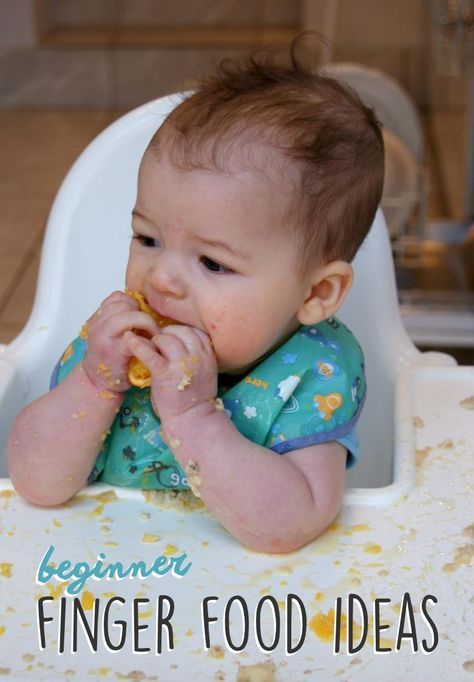 At this stage, it is important to let the child try to eat food of a different consistency, more complex, in order to train the maxillofacial apparatus. Thus, the child gradually prepares for the full chewing of food with the help of the entire jaw, teeth and tongue.
At this stage, it is important to let the child try to eat food of a different consistency, more complex, in order to train the maxillofacial apparatus. Thus, the child gradually prepares for the full chewing of food with the help of the entire jaw, teeth and tongue.
How to know if finger food is safe for a child
A good rule of thumb to help prevent choking is to avoid anything hard (e.g. raw carrots), round (e.g. whole grapes), sticky (e.g. , spoon of nut butter) or too much gummies (such as gummies). At first, the child is given pieces of food in the form of sticks, which can be easily clamped in the child's chick, later, when the child begins to control the finger grip better, you can move on to cubes. At first, finger food should be soft, boiled and melt in your mouth. As a child learns to manage with such products, it is possible to complicate the task and switch to fresh soft foods, etc.
Foods that squeeze easily between fingers are good for older children and for younger children. Around 16-18 months, many babies are ready for more complex textures. During this period, cutting food into pea-sized pieces is also a good idea - many babies tend to put large pieces of food in their mouths, so small cubes are used to avoid choking. We always adjust the sizes of products according to the age and eating experience of our own child.
Usually the first finger food is biscuits or baby biscuits, which are very soft and dissolve easily in the mouth. The baby first sucks it, procrastinates, and learns to roll pieces of food in the mouth with the help of the tongue. A little later, when the teeth appear, you can give the product a little harder, for example, a soft apple, some parents play it safe and give a baked apple without a peel. Later, as new foods, vegetables and fruits are introduced into complementary foods, they are offered in the form of finger food, such as boiled broccoli or cauliflower. In general, the child can be offered almost all products in the form of finger food, which is introduced into baby food.
In general, the child can be offered almost all products in the form of finger food, which is introduced into baby food.
Should the product be peeled or not?
We give an apple to a child without a peel.The first finger foods in the form of vegetables and fruits are given without skins. Yes, the skin of many fruits and vegetables contains valuable nutrients. It is often recommended to leave the skin on in order to take full advantage of the nutrients contained in the product. But removing the top layer from fruits and vegetables helps reduce the amount of pesticides that may be in the product. Peeling fruits and vegetables helps avoid choking hazards due to the rough texture of the skins. The peel also usually sticks to the palate in the child's mouth, thereby hindering him, and can be there for a long time, and when the child swallows, the probability of choking in the absence of an adult nearby is higher. Getting rid of the skin at the beginning of complementary foods also helps prevent disorders
Banana is convenient to eat with a small hand digestion. And we also take into account that there are some vegetables and fruits, such as pumpkin and avocado, which need to be peeled, because their peel is really inedible. It is not worth getting rid of the product from the peel for a long time, only at first. Usually the first couple of months of complementary foods and exposure to finger food. Then the product with the peel is given to the child in the presence of an adult, after which it is advisable to check the baby's mouth to see if he swallowed everything. Forcibly open your mouth should not be, play the game "Show your tongue or where are your teeth." By the age of 1.5, the child copes well with the peel of fruits and vegetables, if it is too rough, then it easily spits it out.
And we also take into account that there are some vegetables and fruits, such as pumpkin and avocado, which need to be peeled, because their peel is really inedible. It is not worth getting rid of the product from the peel for a long time, only at first. Usually the first couple of months of complementary foods and exposure to finger food. Then the product with the peel is given to the child in the presence of an adult, after which it is advisable to check the baby's mouth to see if he swallowed everything. Forcibly open your mouth should not be, play the game "Show your tongue or where are your teeth." By the age of 1.5, the child copes well with the peel of fruits and vegetables, if it is too rough, then it easily spits it out.
Choking
The presence or absence of teeth does not mean that a child can chew. Sometimes children can bite off a piece of food, try to swallow it whole and choke, so never leave a child alone while eating. Some children can store food in their mouths like hamsters, so we always check to make sure the child has swallowed everything before leaving the kitchen. You can read the article on suffocation here.
You can read the article on suffocation here.
Our finger food
At first I gave my first child cookies, later I switched to a fresh apple, mostly fresh fruit, he sucked and procrastinated more than he ate. Later, food appeared in the form of a toy, i.e. we crumbled it, crushed it, and sometimes something got into our mouths. However, since breast milk is always given at the end of complementary foods, I was not too worried about whether the baby was full or not.
With the second child, finger food was a gradual transition from the nibbler. We used it for about a month, then I ventured to give the first pieces of food. But to be honest, the child himself tried the first pieces of food, namely, he stole an apple and took a bite. The first experience of finger food is always scary, because at first the child often coughs and spits out food, he is learning, so it is important to be with the child, if something goes wrong, then the parent will be able to provide first aid.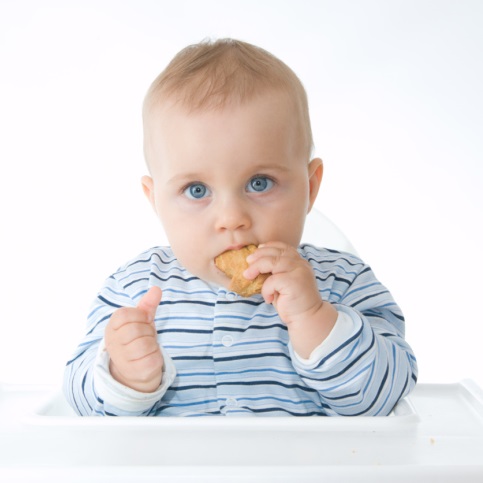 I remind you that the child is suffocating quietly, not a single sound. If he coughs, clears his throat, then everything is within the normal range, you need to help get rid of the food that interferes. Rules for helping with choking know before introducing finger food into complementary foods. It is imperative to look and study, and then give a new consistency of complementary foods.
I remind you that the child is suffocating quietly, not a single sound. If he coughs, clears his throat, then everything is within the normal range, you need to help get rid of the food that interferes. Rules for helping with choking know before introducing finger food into complementary foods. It is imperative to look and study, and then give a new consistency of complementary foods.
Of course, at first, only one type of finger food is placed in front of the baby, later a plate is bought, divided into three to five sections, which is filled with finger food. The baby is already given a choice of what to eat, so you can easily determine the taste preferences in nutrition.
Finger food quick hacks
- The first finger food should be well kneaded between the gums.
- Food in pieces should be age appropriate - do not offer 8 months old baby whole eggs .
- If the child cannot raise his head and sit up without assistance, do not offer him finger food.

- The child should always sit in an upright position, not walk, especially at the first meeting, when he is offered baby food in the form of pieces, to avoid suffocation.
- NEVER leave your child unattended when serving finger food.
Examples of finger food
The first finger food is a biscuit or a baked apple. Those. food that does not need to be chewed, it melts easily in the mouth without additional help from the child. You can start with foods that have been well received by the child in a pureed form on a spoon, serving them in convenient cubes or pieces - the size of a pea for harder items, the size of a stick or wedge for softer foods.
Examples of finger food are:
Click me!!!- Pieces of soft bread or crackers
- Soft cheese, Cheedder or Mozarella
- Banana
- Ripe pear without peel
- Ripe soft green apple without a peel, the first time you can give boiled
- Boiled cabbage carrots
- Boiled potatoes
- Boiled green peas
- Boiled pumpkin
- Boiled fish
- Boiled meat in the form of meatballs
- Pasta
- Quail eggs, etc.

*All products must be familiar to the child or introduced into complementary foods.
Finger food to avoid
When it comes to feeding a baby with food pieces, the biggest problem is preventing choking. So we do not allow him to eat anything without the presence of parents or any adult nearby. And we exclude any food that can get stuck in the child's airways:
Click me!!!- Popcorn,
- Nuts, peanuts,
- raisins and other dried fruits,
- raw vegetables (for example, carrots),
- grapes,
- Crains without bones,
- Hard fruit and vegetables with a peel of
- Zhevkoy
- popcorn, pretzels, corn chips and other snack foods
- marshmallows, etc.
Most doctors do not recommend these foods until the child can eat them safely - around 4 years (although it depends on the child, closer to 3 or 5 years).
We are not afraid and add me to VK and Odnoklassniki, Instagram!
Like this article? Subscribe to site updates
"Encyclopedia Baby Food"!
Don't forget to bookmark us! (CTRL+SHIFT+D) Subscribe to the site, comment, share in social networks.

On our website Encyclopedia Baby Food there is useful information on the nutrition of your children, which is useful for everyone, and we update the website "Encyclopedia Baby Food" constantly and try to search and write only excellent, verified and necessary information for you and your children.
Disclaimer No. 1: It must be understood that the author of the articles on the Baby Food Encyclopedia website is not a medical staff, “I am not a doctor.” The information I share is based on my own experience. My goal is not to teach you how to eat or feed your child, but to talk about how we did it, what new things I learned or read. This expands the picture of Baby Food knowledge, gives you a glimpse of the whole process so you can decide if you like it or not.
Disclaimer No. 2 : However, the above does not replace visiting a pediatrician. Before you start complementary foods, you need to get his professional opinion on the best way to introduce new foods for your baby. I also draw your attention to the fact that you need to look at the original date of the published articles, because some of the "best practices" may have changed. Always check with your child's pediatrician about complementary foods and their health.
I also draw your attention to the fact that you need to look at the original date of the published articles, because some of the "best practices" may have changed. Always check with your child's pediatrician about complementary foods and their health.
Disclaimer #3: Keep in mind that every family is unique, every situation is also completely unique. There are no universal solutions. Only you can find what works best for you. Certain goals require certain sacrifices and priorities - not everyone wants to make those choices, and that's GREAT! Just know what you want to achieve, and be ready to get to work, putting the best of your strength!
Disclaimer No. 4: On the Encyclopedia Baby Food website, photos from books on baby food with attribution are used to better understand the information (Article 1274, Clause 1, Part Four of the Civil Code of the Russian Federation). Literature on baby food is found in the public domain on the Internet.
Apricot puree with chicken
Banan-global puree
Banana puree
borsch
Bousse broth with peas and rice
Botterbrod with kohlrabi
Fast dessert from the finished dough
Spring salad with green Buckwheat porridge with apricots
Buckwheat porridge with banana
Buckwheat pilaf
Children's sausage
Children's milk porridge with banana
Children's vinaigrette
Children's ketchup
Children's cucumber salad
Children's Olivier salad
Children's porridge biscuits
Children's puree of strawberries, bananas, yellow cherries, yoghurt and biscuits with cereals
Children's puree with cottage cheese and fruits
Homemade yeast bread with flax flour
Homemade cheese
Homemade pizza
Breakfast outside
Kohlrabi appetizer
Cauliflower roast
Roasted carrots
Roasted carrots and cherries with millet
Winter salad with Jerusalem artichoke
Cabbage with white beans
Cabbage salad like in the dining room
Mashed potatoes
Quinoa and pumpkin porridge
Quinoa porridge
breakfast cereals
Quinoa and apple
Strawberry puree
Strawberry puree with banana
Strawberry compote
Dried apple compote, raspberry compote
in a thermos" for a child older than 8 months
Corn porridge
Corn porridge with pear
Corn porridge with pumpkin
Corn porridge with pumpkin and carrots
Corn porridge with apple and carrots
Chicken liver in the oven
Chicken cutlets with carrots
Chicken with carrots, sweet peppers and potatoes
Navy pasta
Pasta with orange sauce
Pasta with Gremolata
Muffins with vegetables and egg
Young potatoes in their skins
Milk soup Carrot-potato puree
Carrot-rice casserole
Carrot with chicken
Amanita from eggs and tomatoes
Meat envelopes
Homemade Tarragon drink for children
Vegetable puree from cauliflower and carrots
Vegetable soup with corn semolina
Vegetable soup with cheese and corn semolina
Vegetable soup with spinach
Vegetable puree soup with bell pepper
Oatmeal porridge
Pollock fritters
Hot kefir fritters
Omelet in a bag
Spinach and Cheese Omelette
Omelette Pancake
Peach Puree
Baked Apples 7 months +
Zucchini and Carrot Pie
Zucchini Pie
Rice and Zucchini Pie
Fish Pie
Fish and potato pie
White cabbage pizza
Lavash pizza
Zucchini, tomato and sausage pizza
Tomato and olive pizza
Spinach pizza
Rabbit pilaf
Chicken pilaf with green peas and corn Puree 9019 and cherries
Banana, cottage cheese and porridge puree 4 cereals
Broccoli (cauliflower) puree
Broccoli, courgette and cauliflower puree
Blueberry puree
Pear puree
Pear and banana puree
Pear and banana puree, baked
Pear and pumpkin puree 7 months +
Pear, pumpkin and peach puree
Pear, apple, plum and prunes puree
Blackberry puree
Turkey puree
Zucchini puree 90 zucchini and broccoli
Zucchini, carrot and potato puree
Quinoa and banana puree
Quinoa and carrot puree
Quinoa, banana and carrot puree
Quinoa, squash and carrot puree
Quinoa, peach and raspberry puree
quinoa, cauliflower, apple, peas and mint
Quinoa, apple, pear and raisin puree
Quinoa, apple, carrot puree
Rabbit, broccoli and cauliflower puree
Chicken, carrot, potato, apple and pea puree
Raspberry, cherry and banana puree
carrots
Carrot and apple puree
Carrot, potato, broccoli and cheese puree
Carrot, potato, apple and quinoa puree
Carrot, pumpkin, apple and prunes puree
Carrot, apple and potato puree
Turnip and carrots
Plum puree
Cottage cheese, strawberry and banana puree
Pumpkin puree
Pumpkin and banana puree
Pumpkin and squash puree
Pumpkin and apple puree
Pumpkin, apple and banana puree
Cauliflower and broccoli puree
Cauliflower and Potato Puree
Cauliflower and Rice Puree
Cauliflower and Apple Puree
Cauliflower, Green Pea and Squash Puree
Cauliflower, Turkey and Potato Puree
Cauliflower, Potato and Squash Puree
Cauliflower, carrot and broccoli puree
Cauliflower, carrot, cheese and rice puree
Cauliflower, apple and courgette puree
Zucchini puree
Zucchini and potato puree
Zucchini, carrot and apple puree 907 cherries
Blueberry puree
Prune puree
Apple, pumpkin, carrot and some curry puree
Apple and pear puree
Apple and strawberry puree
Apple, strawberry and cherry puree
Apple, peach and banana puree
Carrot and pumpkin puree
Cottage cheese and banana puree
Turkey, potato and carrot stew
Zucchini, carrot and broccoli stew
Fish, potato, carrot and broccoli stew
Rice porridge
Whole grain rice porridge
carrot
Rice porridge with pumpkin
Rice porridge with apples
Rice porridge with apple and pear
Rice porridge with apple and pumpkin
Fish cakes with vegetables
Semi-cooked fish
Fish meatballs with ketchup
Baby Fish Soup
Salmon and Celery Fish Soup
Carrot and Kohlrabi Salad
Chickpea Salad
Chickpea and Cabbage Salad
Laziest Soup
Creamy Kohlrabi Soup
Oatmeal Smoothie 90 Sauce
cheese pizza
Pea and bacon soup
Baked vegetable soup
Kohlrabi soup
Salmon soup
Cauliflower soup
Turnip potato soup
Meatball soup for the picky eater
Green apple kohlrabi soup
Rabbit, pumpkin, potato, broccoli and cauliflower soup
Beetroot soup
Pumpkin mushroom soup
Broccoli and celery soup
Soup/stew pork with potatoes and carrots
Cheese chebureks
Pumpkin cheese sauce (Annabelle Carmel recipe)
Buzz Lightyear sandwich
Pumpkin-apple puree
Pumpkin-apple juice
Pumpkin cake
Pumpkin soup 9-mashed
Fruit salad with 70197 Bread lavash
Cauliflower with cheese
Linden tea and thyme
Experimental soup-puree with vermicelli and lentils
Apple puree
Apple juice
Like this article? Subscribe to site updates
"Encyclopedia Baby Food"!
Don't forget to bookmark us! (CTRL+SHIFT+D) Subscribe to the site, comment, share in social networks.

On our website Encyclopedia Baby Food there is useful information on the nutrition of your children, which is useful for everyone, and we update the website "Encyclopedia Baby Food" constantly and try to search and write only excellent, verified and necessary information for you and your children.
Disclaimer No. 1: It must be understood that the author of the articles on the Baby Food Encyclopedia website is not a medical staff, “I am not a doctor.” The information I share is based on my own experience. My goal is not to teach you how to eat or feed your child, but to talk about how we did it, what new things I learned or read. This expands the picture of Baby Food knowledge, gives you a glimpse of the whole process so you can decide if you like it or not.
Disclaimer No. 2 : However, the above does not replace visiting a pediatrician. Before you start complementary foods, you need to get his professional opinion on the best way to introduce new foods for your baby. I also draw your attention to the fact that you need to look at the original date of the published articles, because some of the "best practices" may have changed. Always check with your child's pediatrician about complementary foods and their health.
I also draw your attention to the fact that you need to look at the original date of the published articles, because some of the "best practices" may have changed. Always check with your child's pediatrician about complementary foods and their health.
Disclaimer #3: Keep in mind that every family is unique, every situation is also completely unique. There are no universal solutions. Only you can find what works best for you. Certain goals require certain sacrifices and priorities - not everyone wants to make that choice, and that's GREAT! Just know what you want to achieve, and be ready to get to work, putting the best of your strength!
Disclaimer No. 4: On the Encyclopedia Baby Food website, photos from books on baby food with attribution are used to better understand the information (Article 1274, Clause 1, Part Four of the Civil Code of the Russian Federation). Literature on baby food is found in the public domain on the Internet.
Disclaimer No. 5: Content, editing, proofreading, layout, etc. produced ONLY by the author of the site Encyclopedia Baby food. Therefore, I apologize for spelling, punctuation and stylistic errors. If you notice a mistake, please report it, and do not write angry comments about the illiteracy of the author of the article.
Apricot puree with chicken
Banana-apple puree
Banana puree
Borscht
Broth with peas and rice
Baby mashed potatoes with cottage cheese and fruits
Home yeast bread with linen flour
Home cheese
Home pizza
Breakfast on the street
Kolrabi snack
Baked carrots
Baked carrots and cherries with a prose of 9019 white beans
Cabbage salad
Mashed potatoes
Quinoa and pumpkin porridge
Quinoa porridge
Breakfast cereals
Quinoa and apple
Strawberry puree
Strawberry puree with banana
Strawberry compote
Compote of wild apples and raspberries
Compote of dried fruits steamed in a thermos for a baby over 8 months old
Corn porridge
Corn porridge with pear
Corn porridge9 with pumpkin
Corn porridge with pumpkin and carrot197 Corn porridge with apple and carrots
Chicken liver in the oven
Chicken cutlets with carrots
Chicken with carrots, sweet peppers and potatoes
Navy pasta
Pasta with orange sauce
Pasta with Gremolata
Muffins with vegetables and egg
New potatoes in their skins
Vermicelli milk soup
Carrot and potato puree
Carrot and rice casserole
Carrot with chicken
Fly agaric from eggs and tomatoes children
Vegetable puree with cauliflower and carrots
Vegetable soup with corn semolina
Vegetable soup with cheese and corn semolina
Vegetable soup with spinach
Vegetable soup with bell pepper
0197 Oatmeal porridge
pancakes from polions
pancakes on hot kefir
omelet in the package
omelet with broccoli and cauliflower
omnete with spinach and cheese
Persian puree
pies of cable 7 months +
cup
Rice and zucchini pie
Fish pie
Fish and potato pie
White cabbage pizza
Lavash pizza
Zucchini, tomato and sausage pizza
Tomato and olive pizza
Pizza with spinach
Rabbit pilaf
Chicken pilaf with green peas and corn
Banana and cherry puree
Banana, cottage cheese and porridge puree 4 cereals
Broccoli (cauliflower) puree
Broccoli, squash and cauliflower puree
Blueberry puree
Pear puree
Pear and banana puree
Pear and banana puree, baked
Pear and pumpkin puree 7 months +
Pear, pumpkin and peach puree
Pear, apple, plum and prunes puree
Blackberry puree
Turkey puree
Zucchini puree
Zucchini and broccoli puree
Zucchini, carrot and potato puree
Quinoa and banana puree
Quinoa and carrot puree
Quinoa, banana and carrot puree
Quinoa, peach and raspberry puree
Quinoa, cauliflower, apple, pea and mint puree
Quinoa, apple, pear and raisin puree
Quinoa, apple, carrot puree
Rabbit, broccoli and mint puree cauliflower
Chicken, carrot, potato, apple and pea puree
Raspberry, cherry and banana puree
Carrot puree
Carrot and apple puree
Carrot, potato, broccoli puree with cheese
Carrot, potato, apple and quinoa puree
Carrot, pumpkin, apple and prunes puree
Carrot, apple and potato puree
Turnip and carrot puree
Plum puree
Cottage cheese, strawberry and banana puree
Pumpkin puree
Pumpkin and banana puree
Pumpkin and banana puree
and zucchini
Pumpkin and apple puree
Pumpkin, apple and banana puree
Cauliflower and broccoli puree
Cauliflower and potato puree
Cauliflower and rice puree
Cauliflower and apple puree
Cauliflower and green pea puree and squash
Cauliflower, turkey and potato puree
Cauliflower, potato and squash puree
Cauliflower, carrot and broccoli puree
Cauliflower, carrot, cheese and rice puree
Cauliflower, apple and squash puree
Zucchini puree
Zucchini and potato puree
Zucchini, carrot and apple puree
Cherry puree
Blueberry puree
Prune puree
Apple, pumpkin, carrot and some curry puree
toy apple puree apple and strawberry puree
Apple, strawberry and cherry puree
Apple, peach and banana puree
Carrot and pumpkin puree
Cottage cheese and banana puree
Turkey, potato and carrot stew
Zucchini, carrot and broccoli stew
Fish, potato, carrot and broccoli stew
Rice porridge
Whole grain rice porridge
Rice porridge with carrots
Rice porridge with pumpkin
Rice porridge with apples
Rice porridge with apple and pear
Rice porridge with apple and pumpkin
Rice porridge with apple and pumpkin
cutlets with vegetables
Ready-to-cook fish
Fish meatballs with ketchup
Fish soup for children
Fish soup with salmon and celery
Carrot and kohlrabi salad
Chickpea salad
Chickpea and cabbage salad
Laziest Soup
Creamy Kohlrabi Soup
Oatmeal Smoothie
Pot Sauce
Cheesy Pizza Sauce
Pea and Bacon Soup
Roasted Vegetable Soup
Kohlrabi Soup
Cauliflower Soup
Salmon Soup
with potatoes and turnips
Meatball soup for the picky eater
Kohlrabi puree with green apple
Rabbit, pumpkin, potato, broccoli and cauliflower soup
Beetroot puree
Pumpkin puree with mushrooms
Broccoli and Celery Soup
Pork Soup with Potatoes and Carrots
Cheese Chebureks
Pumpkin Cheese Sauce (Annabelle Carmel recipe)
Buzz Lightyear Sandwich
Pumpkin Apple Puree
Pumpkin Apple
Pumpkin Juice
Pumpkin Juice puree soup
Fruit salad
Mango fruit salad
Lavash bread
Cauliflower with cheese
Linden and thyme tea
Experimental vermicelli and lentil soup puree
Apple puree
Apple juice
Finger menu.
 Meals for babies
Meals for babies In fact, there is a whole book with "finger" recipes for little children who have not yet mastered cutlery, but can already eat with their hands. But I didn’t read it (once), but in the course of random experiments in our family, such finger dishes for our baby became popular.
Usually at 6 months, babies begin to receive complementary foods in addition to the main food (breast milk or adapted formula). Of course, at first it is mashed potatoes and liquid cereals, juices - something that is easy to swallow. But the child grows and quickly masters chewing skills (even if he has very few or no teeth at all!), improves fine motor skills and shows independence. All these skills help to develop food, especially if it is appetizing, entertaining and you can eat it yourself.
After a year, it usually becomes easier for parents - the baby already eats a lot from the common table, allergies for many go away or are not so acute - and it's time to turn meals into a joyful activity.
It is common to give children dairy products/cottage cheese, cereals, vegetables, fruit and meat/fish during the day. Here are some examples from personal experience.
We have breakfast with cats and dogs (do not be afraid, not a single cat or dog was hurt!) Many children periodically refuse porridge. Do not want and that's it! You can diversify cereal food and give self-baked cakes instead of porridge (you can also just make children's cookies or bread, but this is not so useful and interesting).
It only takes a short time to mix 2-3 cups of baby porridge (rice, buckwheat, corn, or multi-grain) with about 1 cup of milk (or if the porridge is dairy, water), an egg, and a tablespoon of cane sugar (but usually prepared porridge is already sweet, then you can not add sugar). You can add berries or some grated fruit or chopped nuts, put on a baking sheet greased with olive oil, an ordinary tablespoon or teaspoon with neat rounds, or faces, or hearts (the fantasy is limitless - you can "draw" everything that your baby loves) and put in an oven preheated to 200 degrees for 20-30 minutes. Voila, your baby will be happy to eat delicious and lovingly prepared healthy food by mom!
Voila, your baby will be happy to eat delicious and lovingly prepared healthy food by mom!
You can also add baby cottage cheese instead of milk to this recipe - it will also be delicious.
We dine with green trees and the sun. Boiled broccoli is so healthy and so similar to a tree or a bush that if you give a child a little show and show how you can eat it all, he will surely be delighted.
My daughter is one year old, she knows how tall the trees are in the street. At lunch, I once showed her, using the example of broccoli, how you can pick it up yourself and show a tall tree. She proudly takes a piece, lifts it up, and then happily puts it in her mouth. Cauliflower for her is a "blooming" tree.
Slices of boiled carrots or peppers (but it takes longer and you need to remove the skin so that the baby does not choke) or potatoes, or half an egg yolk can serve as the sun. You can also take the sun, show how bright it shines and ... gobble it up!
Cucumber straw weed, tomato flowers and green peas - the most common foods can be served as an entertaining side dish so that the baby develops fine motor skills by picking up pieces with his hands, learns to chew on his own (which does not happen with puree) and, importantly, learns to control feeling full, eating exactly as much as his body requires.
Meat or fish meatballs or pieces of large "adult" cutlets will perfectly play the role of "balls", "balls", running past the "bears". Yes, and just a "patty" like a child, if he sees how she likes her mother.
From the pulp of bread you can "make" a flower or an animal and give it to your child as a reward for a wonderfully eaten dinner!
We have lunch from a cup. All children learn to drink independently in different ways. Someone quickly learns to hold a cup with both hands and drink from it;
In any case, encourage and help your baby improve by giving him more opportunities to drink without your help, offer different options - and let him choose the one that he likes at the moment.
A glass of milk, milk drink, yoghurt or baby kefir is good for an afternoon snack. You can have a bite of not too hard chopped or even whole fruit (if it is convenient for the baby to hold it, for example, a banana) or a bagel, or diet bread (because it crunches so funny!).